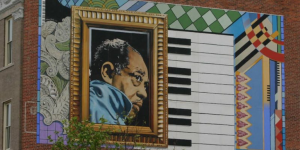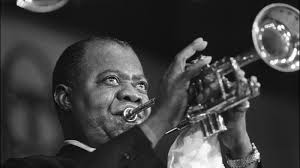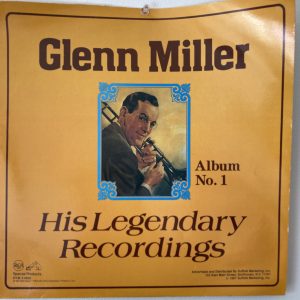This April marks the 20th annual Jazz Appreciation Month, or JAM, a celebration created by the National Museum of American History in 2001 to commemorate a music genre influential to American culture. A variety of celebrations, exhibits, performances, and lectures take place throughout the month–and although this year is a bit different given the circumstances, there is no shortage of resources and entertainment to celebrate the genre.
Swing, Zydeco, or Fusion; these are just a few. Today, jazz genres are seemingly endless and morph into other styles of music, but its origins are more concrete. Back in the late 19th century, in a little city called New Orleans, locals introduced “call and response chanting” with beats and drums, echoing the musical styles of West Africa. Is jazz a distinctly American genre? No, but Americans, African Americans in particular, cultivated the style and made it an American staple. You may not identify as an avid jazz fan, but it’s almost a certainty that sometime, you’ve hummed along to the familiar melody of a jazz standard. [1]
Here in Washington DC, jazz music holds deep roots. The famous Duke Ellington himself was born in Northwest DC. While his career was based in New York City, Washington holds on to his legacy. The popular area known as the U Street Corridor served as an epicenter of African American culture in the early twentieth century. Ellington, along with other greats such as Nat King Cole and Ella Fitzgerald, performed at the Lincoln Theatre, a popular music venue off U Street. To this day, it still draws in crowds to enjoy a variety of performances. Other jazz clubs and venues have emerged since then and can still be found throughout the city. Below are three prominent figures who, I believe served as trailblazers for jazz. They are by no means the only ones.

Duke Ellington: This swing composer graced stages and radios for more than sixty years. Chances are you’ve heard one of Duke Ellington’s most famous songs, “In a Sentimental Mood,” maybe in a movie, hotel lobby, or just on the radio. The soft echo of the piano no doubt soothes all listeners. Born and raised in Northwest D.C. Ellington’s legacy lives on in our region. The Duke Ellington School of Arts bears his name as a school for aspiring artists. His home; the Duke Ellington Bridge; and other locations throughout the city are marked and designated in his memory.

Louis Armstrong: You probably know Armstrong by one of his famous nicknames: “Satchmo,” “Satch,” or “Pops.” Known for his masterful trumpet playing and distinctive singing voice, Armstrong entertained the world for over five decades, and his influence is still present today. He was a staple of Dixieland jazz, a popular genre of the New Orleans region. During a time of racial tension, he was a voice that united: His music provided a bridge between tensions both political and racial. Armstrong was not one to publicly speak of politics or civil rights, but his presence reached far and wide; he even held a concert in East Berlin in 1965, which was controversial for the time. You can read about Satchmo’s life and his influences in his personal writings in Music is my life: Louis Armstrong, autobiography, and American Jazz. [2]

Glenn Miller: Major Alton Glenn Miller, his official rank while enlisted in the Army during World War II, was a talented trombonist and served as the leader of the Army Air Forces Band. His hope was to modernize the existing Army band; he no doubt exceeded this aspiration. At a time of uncertainty in the world, much like now, he provided comfort and entertainment as his music boosted the morale of soldiers and civilians alike. His most popular recordings, “In the Mood” and “Moonlight Serenade,” show his range. “In the Mood” is upbeat and makes one immediately feel happy and giddy, feeling the need to dance. “Moonlight Serenade” is a bit more somber and evokes a sense of longing. Unfortunately, Miller’s success came to an ominous ending in 1944, when his plane disappeared while traveling from England to France, likely due to a crash caused by fog. To learn more about Miller’s timelessness as a musician and his time in the Army Air Force Band, you can access this online book by Dennis M. Spragg: Glenn Miller: Declassified. [3]
How can you enjoy the wonders of jazz? Typically, one could attend the popular Jazz in the Garden held by the National Gallery of Art in their sculpture garden throughout the summer. Visit any neighborhood in the city and chances are there is jazz music performed at least once a week. Since those are wishful scenarios at the moment, there are plenty of ways to enjoy jazz from your home! Artists are holding livestream performances, many of which can be found here. You can always find a jazz playlist, of any genre you like, on your favorite music streaming service (below is a list of my personal favorites). This year, the National Museum of American History is celebrating Women in Jazz where you can visit their website for resources, history, and to view the museum’s online collection.
“You Rascal You” – Wynton Marsalis
“Strangers in the Night” – Frank Sinatra
“Beyond the Sea” -Kevin Spacey version
“Moonlight Serenade” – Glenn Miller
“Blue in Green” – Miles Davis
“I Get Along Without You Very Well (Except Sometimes)” – Chet Baker
“All The Cats Join In” – Benny Goodman
“Go Down Moses” – Louis Armstrong
“C’est Si Bon” – Yves Montand
“I Love Paris” – Ella Fitzgerald
[1] “Jazz Origins in New Orleans.” https://www.nps.gov/jazz/learn/historyculture/history_early.htm. Accessed April 7, 2020.
[2] “Louis Armstrong: Biography.” Louis Armstrong House Museum. https://www.louisarmstronghouse.org/biography/ Accessed April 7, 2020.
[3] “Glenn Miller: Biography.” https://www.biography.com/musician/glenn-miller. Accessed April 7, 2020.
